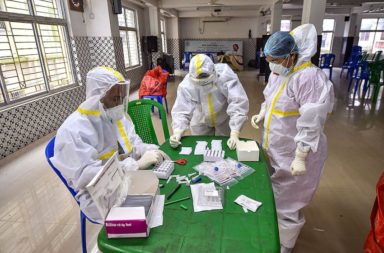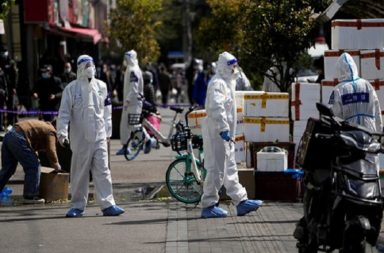The Union health ministry reported on Tuesday that 6,358 new Covid-19 cases and 293 deaths had occurred in the last 24 hours. According to the Indian government, the country has reported 653 cases of Omicron.
India’s Covid-19 case tally has risen to 3,47,99,691 and the death toll climbed to 4,80,290, as per the ministry
Also the total number of cases of new Omicron variant of COVID-19 recorded in the national capital has mounted to 165, according to data shared by the Union Health Ministry on Tuesday. Amid the Omicron scare, Delhi recorded 331 fresh coronavirus cases, the highest single-day rise since June 9 and one death, on Monday, while the positivity rate mounted to 0.68 per cent, according to data shared by the city health department.
India has logged 653 cases of the Omicron variant across 21 states and UTs so far, out of which 186 people have recovered or migrated, showed the Union Health Ministry data updated on Tuesday.
Maharashtra recorded the maximum number of 167 such cases followed by Delhi at 165, Kerala 57, Telangana 55, Gujarat 49 and Rajasthan 46.
Delhi’s first case of the Omicron variant — a 37-year-old man from Ranchi — was detected on December 5. He has been discharged.
Amid a jump in Omicron cases reported in Delhi, doctors have warned that people should avoid all kinds of gatherings as this is a highly transmissible variant, and follow Covid-appropriate behaviours, else the situation may worsen.
The Delhi government has released a new order on stricter COVID-19 safety guidelines as cases continue to rise in the national capital amid the Omicron strain threat. The “Level 1” or “Yellow Alert” guidelines say cinema halls will be open on odd-even dates and gyms will be closed, while night curfew remains in force.
Restrictions under the yellow alert for Covid will be implemented in Delhi, Delhi Chief Minister Arvind Kejriwal said Tuesday.
The restrictions under the Covid Graded Response Action Plan (GRAP) include shutting all educational institutions, capping wedding and funeral gatherings to 20, reducing seat occupancy in Delhi Metro and buses to 50%, among other things.
According to GRAP, which was notified by the government in August this year, different restrictions are supposed to come into force if cases, positivity rate or hospitalisations increase beyond certain limits.
The yellow alert is issued when the city sees a positivity rate of over 0.5% for two consecutive days, cases cross 1,500 in a week, or average occupancy of oxygen beds in hospitals remains 500 for a week.
- As per the plan, shops in markets and malls dealing with non-essential goods and services will be allowed to open as per the odd-even formula between 10 am to 8 pm, while one weekly market will be allowed per municipal zone at half the capacity of vendors. Shops selling essential items will remain open on all days.
- Restaurants will operate at 50 per cent capacity between 8 am – 10 pm, bars will open between 12-10 pm also at 50 per cent capacity. Schools, educational institutions, cinemas, banquet halls, auditoriums, spas, gyms and entertainment parks will remain shut.
- Delhi Metro and buses will be allowed to operate at 50 per cent capacity. Delhi government offices will call 100% grade I officers, while private firms will be allowed to call 50% staff between 9 am to 5 pm. Gyms and yoga centres will also shut. There will be a complete ban on social/entertainment/religious/political/festival-related gatherings. Sports complexes, stadiums (except national/international sports events), entertainment parks will shut down.



